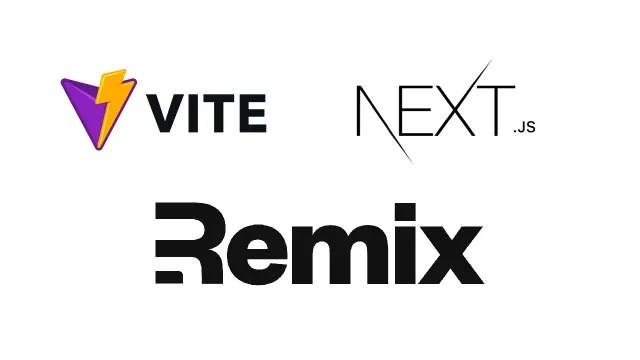The Future of Frontend Hosting: What Developers Need to Know in 2025

Frontend hosting has evolved dramatically in the past decade. We’ve gone from uploading static HTML files to FTP servers to deploying full-stack applications at the edge with just a single command. With frameworks like Next.js, Remix, Gatsby, and Vite pushing the boundaries of what a “frontend” even means, hosting providers are racing to keep up.
So, what does the future of frontend hosting look like in 2025 and beyond? Let’s explore the key trends, opportunities, and trade-offs.
From Static Sites to Edge Deployments
Then: Traditional frontend hosting was all about serving static files. CDNs gave us global reach, but sites were still limited to pre-rendered content. Interactive apps often relied on clunky backend calls to distant servers.
Now: Edge networks have changed the game. Platforms like Vercel Edge, Netlify Edge Functions, and Cloudflare Pages allow rendering to happen near the user, not in a centralised region. Instead of waiting for a round-trip to a distant server, responses are generated in milliseconds at the network edge.
What this means in practice:
-
Ultra-low latency: Apps feel instantly responsive, even across continents.
-
Dynamic personalisation: You can tailor content at the edge (e.g., language, geolocation, A/B testing) without sacrificing speed.
-
Scalability built-in: Edge platforms distribute load automatically, removing the need to plan for server capacity.
The catch: Debugging at the edge can be trickier, and not all frameworks fully support edge-first execution yet. But the direction is clear: edge-native will soon be the default.
The Rise of Full-Stack Frontend Frameworks
React-based frameworks are no longer just about rendering UIs. Next.js, Remix, Gatsby, and even Vite now ship with built-in APIs, SSR, and routing logic. This blurs the line between frontend and backend, and hosting providers are adapting to run these full-stack apps without extra configuration.

Advantages:
-
Single deployment pipeline: No more separate repos for frontend and backend — everything is in one container or deployment.
-
Developer speed: Less context switching, fewer integration headaches.
-
Consistency: Shared code between frontend and backend (e.g., data models, types) means fewer bugs.
Disadvantages:
-
Vendor lock-in: Some frameworks work best on specific hosts (Next.js with Vercel, Remix with Fly.io/Netlify). Migrating later can be painful.
-
Limited flexibility: Full-stack frameworks cover many use cases, but can be restrictive if you need unusual infrastructure.
For most teams, the productivity boost outweighs the risks — but it’s a trade-off worth keeping in mind.
Serverless Meets Frontend Hosting
Serverless isn’t new, but its integration with frontend hosting is. Instead of spinning up a separate backend for small tasks, developers can now deploy functions right alongside the frontend.
Examples of common use cases:
-
Authentication flows (login/logout APIs).
-
Webhooks (Stripe, GitHub events).
-
Lightweight APIs (fetching or transforming data).
-
Form submissions (contact forms, surveys).
This tight integration simplifies projects — no more maintaining a full backend just for a few endpoints.
Pros:
-
No infrastructure management.
-
Pay only for execution time.
-
Perfect for microservices and small apps.
Cons:
-
Cold starts can still affect performance (though much improved).
-
Debugging distributed functions is harder.
-
Not ideal for long-running or stateful processes.
The trend is clear: more apps will lean on serverless-first approaches, with traditional backends reserved for complex use cases.
Compliance and Regional Hosting
With regulations like GDPR, NIS2, and DORA tightening in Europe, where your app is hosted is now as important as how fast it runs.
Key trends to watch:
-
Regional cloud providers: Companies like OVH, Hetzner, and Scaleway are rising as EU-friendly alternatives to AWS, GCP, and Azure.
-
Data sovereignty: Clients increasingly demand guarantees that their data never leaves the EU (or specific countries).
-
Multi-cloud compliance setups: Enterprises may split workloads between US hyperscalers for performance and EU providers for regulatory needs.
For developers, this means hosting choices can no longer be purely technical. Compliance, governance, and business risk are now part of the equation.
AI and Smart Deployments
Artificial Intelligence is quietly reshaping frontend hosting too. Providers are starting to use AI to optimise everything from performance to scaling decisions.
Emerging use cases:
-
AI-driven build optimisation: Detecting unnecessary code or suggesting bundle splits.
-
Predictive scaling: Analysing traffic patterns to pre-scale resources before a surge.
-
Automated debugging insights: Suggesting fixes for failed deployments or misconfigured APIs.
-
Image/video optimisation: Automatically compressing and delivering assets at the right resolution.
We’re still early in this trend, but over the next few years, developers may spend less time manually tuning performance and more time letting hosting platforms optimise on their behalf.
What Developers Should Prepare For
To stay ahead of the curve in frontend hosting, developers should focus on:
-
Learning edge and serverless patterns: These are becoming core skills, not extras.
-
Understanding compliance basics: Even if you’re not in legal, knowing where data lives is critical.
-
Balancing vendor lock-in vs flexibility: Short-term convenience can create long-term dependency.
-
Leveraging AI tooling: Start experimenting with AI-assisted deployment and monitoring — it will soon be standard.
Conclusion
Frontend hosting is no longer just a static file problem. It’s a fast-moving field that now combines edge performance, serverless flexibility, compliance awareness, and AI-powered optimisations. For teams using Next.js, Remix, Gatsby, Vite, or other modern frameworks, the hosting decision is now strategic, not just technical.
At ZEN Software, we see hosting as a vital part of the developer experience. Choosing the right platform in 2025 means not just getting apps online but ensuring they are fast, secure, compliant, and future-ready.
The future of frontend hosting is already here — the question is how quickly teams will adapt.

Optimize with ZEN's Expertise
Upgrade your development process or let ZEN craft a subsystem that sets the standard.
Read more:

AI-Assisted Code Reviews: What the Latest Research Reveals About GPT in Pull Request Workflows
At ZEN, we keep a close eye on emerging research that affects how engineering teams build, ship, and maintain software. ...

Code Reviews That Teach, Not Torture: Patterns for Effective, Respectful, and Useful Code Review Culture
Code reviews are supposed to make us better developers — not frustrated ones. Yet, in many teams, they end up feeling li...

The Future of Frontend Hosting: What Developers Need to Know in 2025
Frontend hosting has evolved dramatically in the past decade. We’ve gone from uploading static HTML files to FTP servers...

Best Ways to Host Your React-Based Frontend (Vite, Next.js, Remix) and Backend from One Container
Modern applications often combine a React-based frontend (built with Vite, Next.js, Remix, etc.) and a backend API (Node...

AI is the missing piece of the Productivity Puzzle
Today, I’d like to plea that Artificial Intelligence (AI) is the missing piece of the productivity puzzle, revolutionizi...

Say Goodbye to Frustration: ZEN Software's Plugin Makes Picture Labeling a Breeze!
WordPress empowers businesses, creative enthusiasts, and content creators with its user-friendly interface and extensive...
